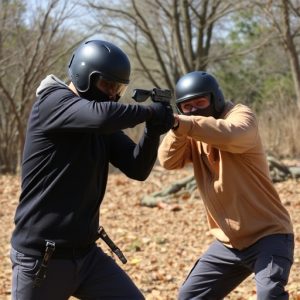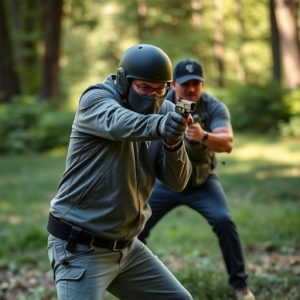Taser Deployment Duration & Safety: Apartment Living Guide
Stun guns, or Tasers, are noise-free self-defense tools for apartments, delivering electric shocks t…….
Stun guns, or Tasers, are noise-free self-defense tools for apartments, delivering electric shocks to temporarily paralyze targets (3-7 seconds). For optimal performance in close-quarter spaces, consider model, distance, body type, and resistance. Use responsibly as a last resort; legal deployment guidelines exist for law enforcement, focusing on threat levels and de-escalation. Invest in a compact, powerful stun gun with features like range and activation mechanism, store securely, and combine with other safety measures. Modern models offer enhanced features while adhering to responsible use and local legal boundaries for effective apartment protection.
“The impact of taser deployment on an individual’s body has sparked significant debate, particularly regarding paralysis duration. This article delves into the intricate details of Taser use and its aftereffects. We explore factors influencing paralysis, from physical attributes to environmental conditions, offering insights that could revolutionize tactics in law enforcement. Additionally, we scrutinize legal justifications for Taser deployment, present best practices for apartment safety using stun guns, and consider alternatives, ensuring readers are equipped with knowledge about non-lethal self-defense strategies. For those seeking the best stun guns for apartment living, this guide offers essential information.”
- Understanding Taser Deployment and Its Effects on the Body
- Factors Influencing Paralysis Duration After Taser Use
- Legal Considerations: When is Taser Deployment Justified?
- Best Practices for Apartment Safety Using Stun Guns
- Exploring Alternatives: Non-Lethal Weapons and Self-Defense Strategies
Understanding Taser Deployment and Its Effects on the Body
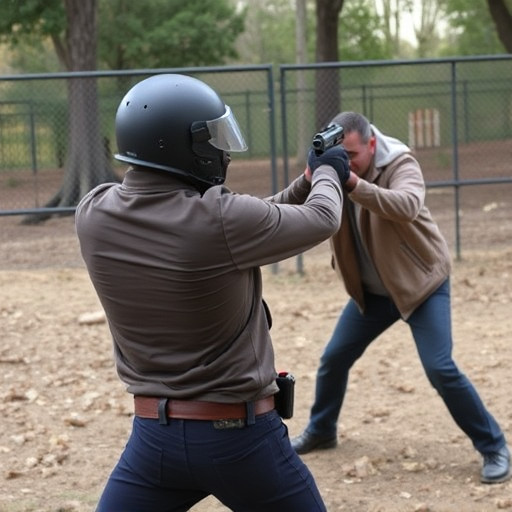
Tasers, or stun guns, are designed to temporarily incapacitate a person through electric shock, making them valuable tools for law enforcement and self-defense in specific scenarios, especially in apartment living situations where noise can be a concern. When deployed, these devices deliver a high-voltage, low-current electrical pulse through two probes connected to the target’s body, disrupting muscle control and causing muscular spasms. This disruption leads to temporary paralysis, providing an opportunity for officers or users to gain control of a potentially dangerous situation.
The duration of this paralysis can vary widely based on factors like the model of Taser used, the distance between the probes and the target, and the individual’s body type and resistance. Studies indicate that the average incapacitation time is around 3 seconds, but it can last up to 7 seconds for some models. For those seeking the best stun guns for apartment living, understanding these variables is crucial to making an informed decision. It’s important to note that while Tasers are powerful tools, they should be used responsibly and only as a last resort, considering the potential risks and aftermath of their deployment.
Factors Influencing Paralysis Duration After Taser Use
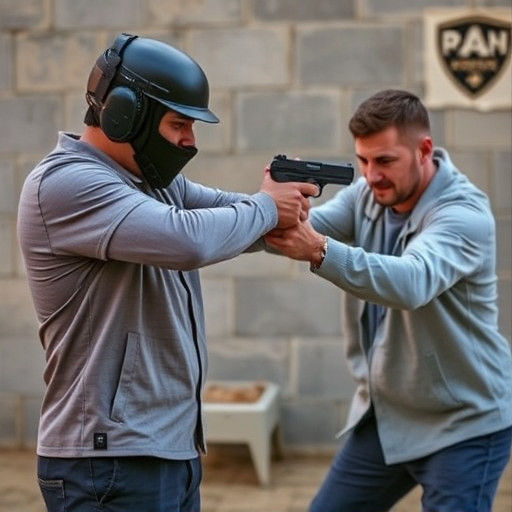
The duration of paralysis after Taser deployment can vary significantly based on several factors. One of the primary considerations is the model and power output of the stun gun used, with more advanced models potentially delivering longer-lasting immobilization. Additionally, the distance between the user and the target plays a crucial role; shorter ranges often result in quicker recovery due to reduced electrical impact. The physical condition of the individual being stunned is another key factor; healthier individuals may recover faster compared to those with pre-existing medical conditions or physical limitations.
Furthermore, environmental factors like temperature and humidity can influence paralysis duration. Warmer environments tend to enhance conductivity, potentially extending the immobilization period. On the other hand, best stun guns for apartment living, where space is limited and close-quarter deployments are common, should be designed with efficiency in mind, ensuring rapid recovery times to minimize disruption and risk.
Legal Considerations: When is Taser Deployment Justified?
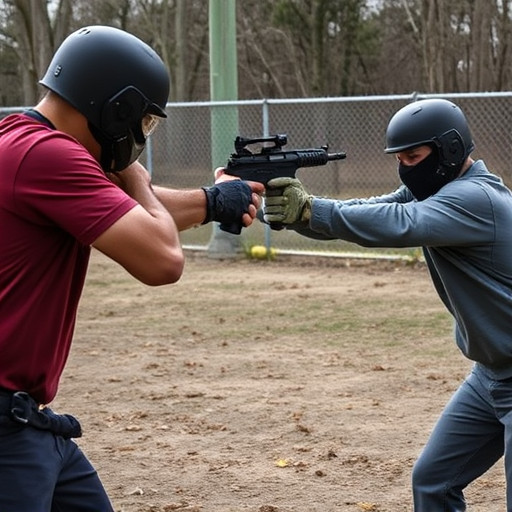
In the context of law enforcement and self-defense, the justification for deploying a taser—a device known as one of the best stun guns for apartment living due to its non-lethal capabilities—is a complex matter. Law enforcement agencies have strict protocols in place to ensure the responsible use of force, including tasers. These guidelines consider factors such as the level of threat posed by an individual, the potential for injury, and whether less lethal options have been exhausted. Justification for taser deployment often arises in situations where an individual is exhibiting dangerous or aggressive behavior that cannot be safely resolved through other means.
The use of force, including tasers, is subject to legal scrutiny, with variations in regulations across jurisdictions. In many places, officers are required to consider the proportionality of their response, aiming to minimize harm while ensuring public safety. Best practices for taser deployment emphasize de-escalation techniques and the need to avoid excessive force. Understanding these legal considerations is crucial for both law enforcement professionals and individuals exploring best stun guns for apartment living as a means of personal protection, ensuring that such devices are used appropriately and within the boundaries of the law.
Best Practices for Apartment Safety Using Stun Guns
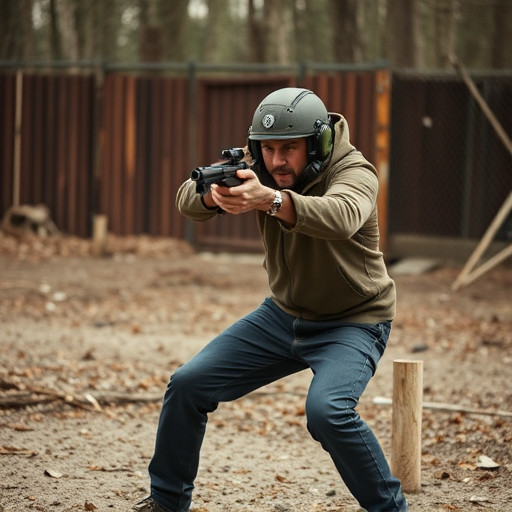
When it comes to apartment safety, especially for those who live alone or in areas with high crime rates, a stun gun can be a valuable tool. The best stun guns for apartment living should be compact, easy to hide, and powerful enough to incapacitate an assailant briefly, allowing you to escape or call for help. It’s crucial to understand that these devices are not weapons of mass destruction but tools designed to give you time in a dangerous situation.
Best practices include familiarizing yourself with the stun gun’s range, activation mechanism, and safety features. Ensure it’s easily accessible yet secure from accidental discharge. Regularly test your stun gun’s functionality and keep it updated with proper maintenance. Also, stay informed about local laws regarding stun guns to avoid legal issues. Remember, while a stun gun can offer immediate protection, it should complement other safety measures like robust door locks, security cameras, and personal alarm systems for comprehensive apartment safety.
Exploring Alternatives: Non-Lethal Weapons and Self-Defense Strategies
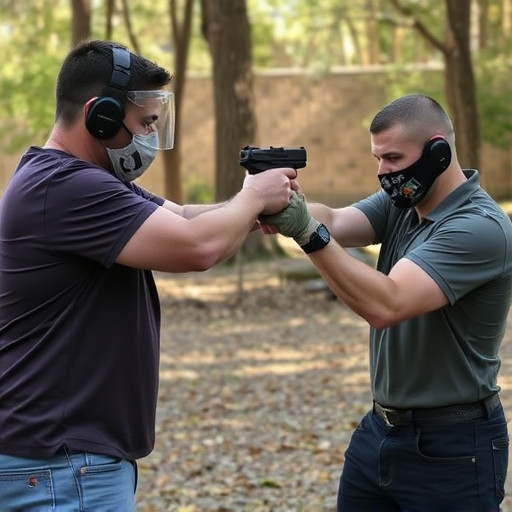
In situations where a taser might be deployed, exploring alternatives that offer non-lethal force options is crucial, especially in settings like apartment living. For those seeking robust self-defense strategies while prioritizing safety and legality, best stun guns emerge as a viable solution. These devices deliver powerful jolts, temporarily incapacitating assailants without causing permanent harm, making them ideal for home protection.
Apartment dwellers looking to fortify their security can benefit from the compact design and discreet nature of top-rated stun guns, easily concealed for rapid access. Modern models offer enhanced features like LED lights and powerful voltage outputs, ensuring effectiveness in various self-defense scenarios. By considering these non-lethal weapons, individuals can maintain control over their safety while adhering to responsible use guidelines.
In light of the diverse factors influencing the duration of paralysis from Taser deployment, it’s clear that understanding both the technology and its limitations is paramount. As we’ve explored, legal justifications vary by region, emphasizing the need for responsible use and proper training. For apartment dwellers seeking safety, exploring best stun guns for apartment living alongside non-lethal alternatives offers a balanced approach to personal defense. By adhering to established best practices and staying informed about legal guidelines, individuals can make informed decisions to enhance their security while navigating the complexities of Taser deployment.
